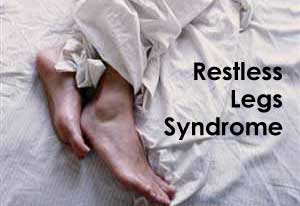- Home
- Editorial
- News
- Practice Guidelines
- Anesthesiology Guidelines
- Cancer Guidelines
- Cardiac Sciences Guidelines
- Critical Care Guidelines
- Dentistry Guidelines
- Dermatology Guidelines
- Diabetes and Endo Guidelines
- Diagnostics Guidelines
- ENT Guidelines
- Featured Practice Guidelines
- Gastroenterology Guidelines
- Geriatrics Guidelines
- Medicine Guidelines
- Nephrology Guidelines
- Neurosciences Guidelines
- Obs and Gynae Guidelines
- Ophthalmology Guidelines
- Orthopaedics Guidelines
- Paediatrics Guidelines
- Psychiatry Guidelines
- Pulmonology Guidelines
- Radiology Guidelines
- Surgery Guidelines
- Urology Guidelines
AAN's Practice Guideline of treatment of restless legs syndrome in adults

American Academy of Neurology (AAN) has issued guideline, “Treatment of restless legs syndrome in adults,” which has been published in Neurology.When addressing RLS, clinicians and patients must first determine whether symptoms require treatment, the setting in which this practice guideline is relevant. Treatment should be considered if RLS symptoms interfere with sleep or daytime function to an important degree.
In moderate to severe primary restless legs syndrome (RLS)
Clinicians should consider prescribing a pharmacologic agent to reduce RLS symptoms:
- Strong Evidence Pramipexole, rotigotine, cabergoline*, and gabapentin enacarbil (Level A).
- Moderate Evidence Ropinirole, pregabalin, and IV ferric carboxymaltose, and in patients with serum ferritin ≤ 75 mcg/l, ferrous sulfate with vitamin C (Level B).
- Weak Evidence Levodopa (Level C).
- Cabergoline* instead of levodopa (Level C).
Insufficient Evidence Preferential use of pregabalin instead of pramipexole (Level U).Gabapentin, IV iron sucrose, oxycodone, clonazepam, bupropion, clonidine, selenium, rifaximin, botulinum neuneurotoxin,valproic acid, carbamazepine, or valerian in the treatment of RLS (Level U).
For patients with RLS who have not responded to other treatments:
- Prolonged-release oxycodone/naloxone (where available) (Level C), but potential benefits need to be weighed against known opioid risks.
For patients with primary RLS for whom clinicians want to target sleep
- Strong Evidence Ropinirole, when targeting periodic limb movements of sleep (PLMS), specifically the Periodic Limb Movement Index (PLMI) as measured by polysomnography (PSG) (Level A).
- Cabergoline* and gabapentin enacarbil, with regard to subjective sleep measures (Level A).
- Moderate Evidence Pramipexole, rotigotine, cabergoline*, and pregabalin, when targeting PLMS, specifically the PLMI as measured
by PSG (Level B). - Ropinirole, gabapentin enacarbil, and pregabalin, for at least some objective sleep measures (e.g., total sleep time [TST], sleep efficiency, sleep latency, and wake after sleep onset [WASO]) (Level B).
- Pregabalin instead of pramipexole, with regard to subjective sleep outcomes (Level B).
- Ropinirole, pramipexole, and pregabalin, with regard to subjective sleep measures (Level B).
- Moderate to Weak Evidence Rotigotine, with regard to subjective sleep measures (Levels B and C).
For patients with RLS for whom clinicians want to target concomitant psychiatric symptoms:
- Moderate Evidence Ropinirole, in the context of anxiety (Level B).
- Gabapentin enacarbil, for overall mood (Level B).
- Weak Evidence Ropinirole, in the context of depression (Level C).
- Pramipexole, for depression and anxiety, in the context of moderate to severe RLS-related mood disturbance (Level C)
For patients with RLS for whom clinicians want to select an agent that improves QoL:
- Moderate Evidence Ropinirole, pramipexole, cabergoline*, gabapentin enacarbil, or IV ferric carboxymaltose (Level B).
- Weak Evidence Rotigotine or pregabalin (Level C).
- Insufficient Evidence Levodopa, for improving QoL in RLS (Level U).
In patients with secondary RLS associated with end-stage renal disease/hemodialysis (ESRD/HD):
- Moderate Evidence Vitamin C and E supplementation (alone or in combination) (Level B).
- Weak Evidence Ropinirole, levodopa, or exercise (Level C).
- Insufficient Evidence Gabapentin or IV iron dextran in RLS associated with ESRD/HD (Level U). There is also insufficient evidence to support or refute the use of gabapentin or levodopa preferentially over the other in this population (Level U).

Disclaimer: This site is primarily intended for healthcare professionals. Any content/information on this website does not replace the advice of medical and/or health professionals and should not be construed as medical/diagnostic advice/endorsement or prescription. Use of this site is subject to our terms of use, privacy policy, advertisement policy. © 2020 Minerva Medical Treatment Pvt Ltd